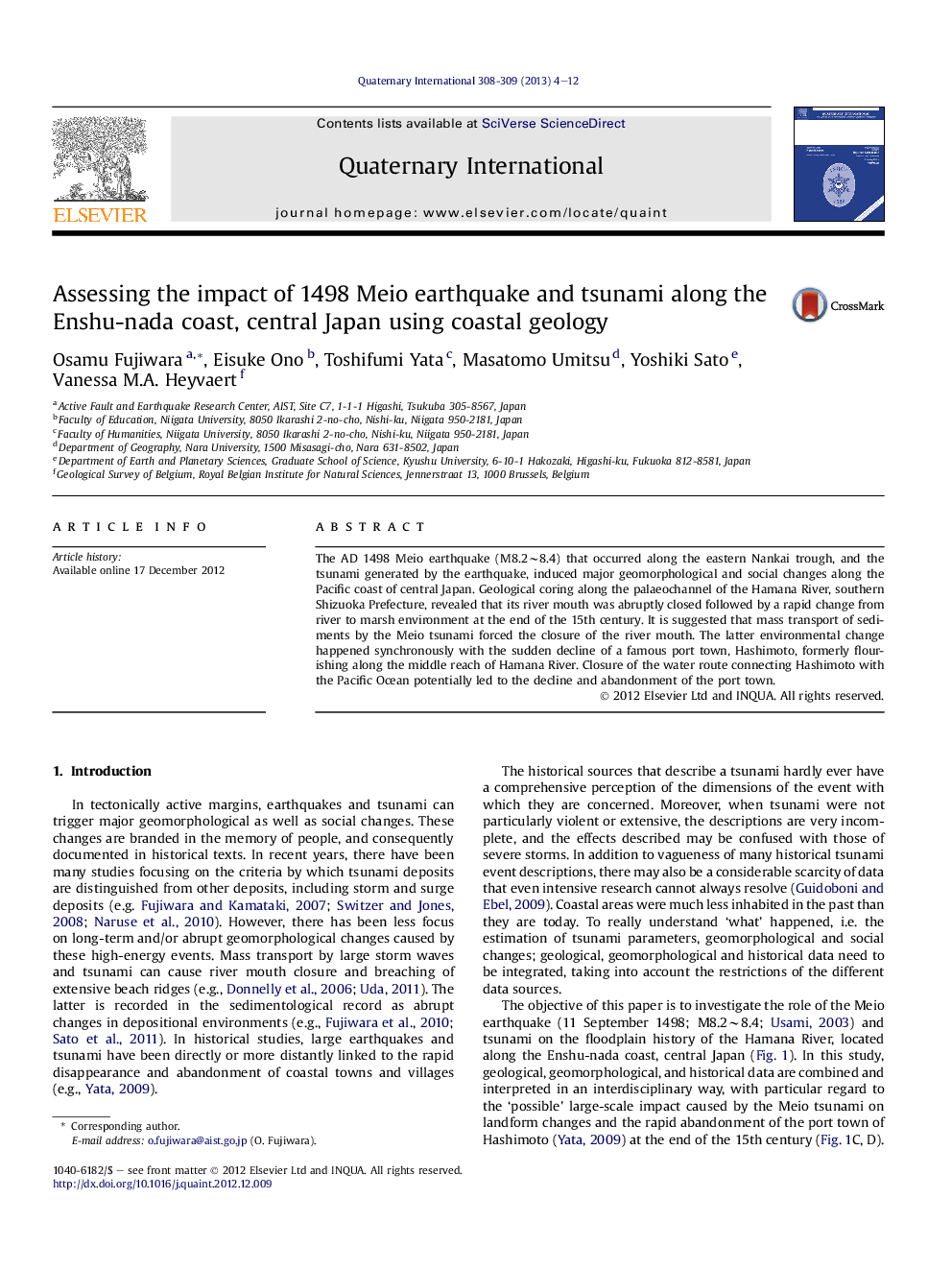| Article ID | Journal | Published Year | Pages | File Type |
|---|---|---|---|---|
| 1041794 | Quaternary International | 2013 | 9 Pages |
The AD 1498 Meio earthquake (M8.2∼8.4) that occurred along the eastern Nankai trough, and the tsunami generated by the earthquake, induced major geomorphological and social changes along the Pacific coast of central Japan. Geological coring along the palaeochannel of the Hamana River, southern Shizuoka Prefecture, revealed that its river mouth was abruptly closed followed by a rapid change from river to marsh environment at the end of the 15th century. It is suggested that mass transport of sediments by the Meio tsunami forced the closure of the river mouth. The latter environmental change happened synchronously with the sudden decline of a famous port town, Hashimoto, formerly flourishing along the middle reach of Hamana River. Closure of the water route connecting Hashimoto with the Pacific Ocean potentially led to the decline and abandonment of the port town.
